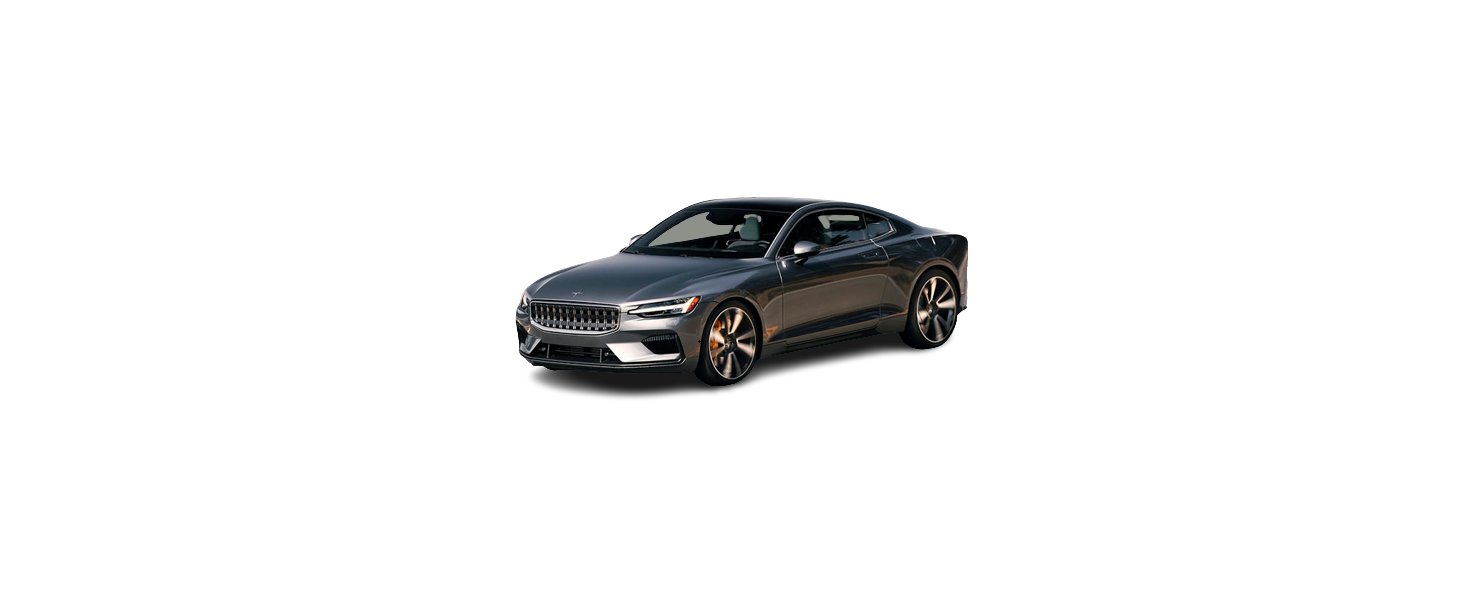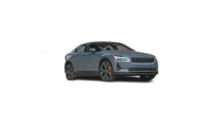After a serious collision, it may no longer be possible to control and steer the vehicle. In order to avoid or mitigate a possible further collision with a vehicle or an object in the vehicle’s path, the brake assist system is activated automatically to help stop the vehicle safely.
The brake lights and hazard warning flashers are activated during braking. When the vehicle has stopped, the hazard warning flashers will continue to flash and the parking brake will be applied.
If braking is not appropriate, e.g. if there is a risk of being hit by passing traffic, the driver can override the system by depressing the accelerator pedal.
This function assumes that the brake system is intact after a collision.
Drive modes when using time interval to vehicle ahead
Settings are made using the DRIVE MODE controls.
Select one of the following:
- Pure – Driver support will focus on providing good fuel economy, which will increase the time interval to the vehicle ahead.
- Hybrid – Driver support will focus on following the set time interval to the vehicle ahead as smoothly as possible.
- Power – Driver support will focus on following the set time interval to the vehicle ahead more exactly, which could mean faster acceleration and heavier braking.
Driver support safety check at start
The green dots indicate that everything looks good. If any system needs an extra check, this will be indicated by an orange dot and a message in the instrument panel.
NOTE
Available driver support systems may vary depending on the market, options, car model and model year.
Driver support systems
The systems can, for example, help the driver:
- maintain a set speed
- maintain a set time interval to the vehicle ahead
- help prevent a collision by warning the driver and applying the brakes
- park the vehicle.
Some of the systems are standard and others are options. This also varies from market to market.
Driver support warnings
What is happening in your vehicle?
There are a number of functions in your vehicle that can actively help to improve safety in traffic, both for you and for other road users. To help prepare you in the event any of the functions is suddenly activated, an overview is provided here of some functions and how they might react. If a function is activated, you can also be notified of this via a text message in the instrument panel.
Read the individual parts about each system to fully understand the functions and be notified of important warnings.
Warning with symbol, sound, light or vibration
The safety functions in your vehicle can alert you in different ways. They can provide alerts through e.g. vibrations in the steering wheel, brake pulse alerts, lights or audible signals, or through symbols in the instrument panel.
Alerts can also be shown in the head-up display.
City Safety™
- Brake pedal pulsations, lights and audible signals.
- The brakes will be applied in certain situations if the driver does not act within a reasonable amount of time.
Lane Keeping Aid (LKA)(Lane Keeping Aid)
Lane Keeping Aid can help you reduce the risk of the vehicle inadvertently veering out of its own lane. Because you can set preferences for how the function provides assistance, individual experiences of this safety function may vary.
- Assist: If the function detects that the vehicle is approaching a lane marker line, you will feel light pressure applied to the steering wheel. Both hands must be on the steering wheel for this function to work.
- WARNING: If the function detects that the vehicle is approaching a lane marker line, you will be alerted through vibrations in the steering wheel.
- Both: You are alerted with vibrations and light pressure on the steering wheel.
Steering assistance during collision risks
When you start the function, three sub-functions will be activated that can assist in various situations. How the function is experienced can therefore differ depending on which sub-function is activated.
- Run-Off Mitigation with steering assistance: If the camera detects that the vehicle is about to cross the edge of the road, the function may attempt to steer the vehicle back into its own lane. The function may also attempt to apply the brakes if it determines that steering assistance is insufficient. No steering or braking intervention will be provided if you have the turn signals on or if the function determines that the driver is actively driving the vehicle.
- Steering assistance during collision risks from oncoming traffic: If the vehicle is about to leave its own lane while an oncoming vehicle is approaching, the function can provide steering assistance to help you steer the vehicle back into its own lane. No steering or braking intervention will be provided if you have the turn signals on or if the function determines that the driver is actively driving the vehicle.
- Steering assistance during collision risks from behind: If the vehicle is about to leave its own lane while another vehicle is behind and to the side of your vehicle, in your blind spot or rapidly approaching from behind, the function can assist by steering the vehicle back into its own lane. The function can provide steering assistance even if the turn signals are on and you are actively driving the vehicle.
Rear Collision Warning (RCW)*
- Rapid flashing of direction indicators.
- At lower speeds, RCW can tension the seat belts by activating the seat belt tensioners and the Whiplash Protection System.
- If the vehicle is stationary, the brakes can be applied.
Blind Spot Information (BLIS)
Driver Alert Control (DAC)
- Audible signal combined with a symbol in the instrument panel and the message Time for a break soon?.
Distance Alert*
Distance Alert can warn you if the distance to the vehicle ahead decreases to an unsafe distance.
- Audible alert and/or a symbol in the windshield’s head-up display.
Cross Traffic Alert (CTA)*
- Audible signal from the left or right speaker depending on the direction from which the object is approaching
- Icon in the instrument panel
- Icon in the Park Assist Camera’s Top view
Whiplash Protection System (WHIPS)
WHIPS is a function that can help protect against whiplash injury. The system consists of energy-absorbing backrests and seat cushions as well as specially designed head restraints in the front seats.
The functions described here are supplementary aids – they cannot manage all situations in all conditions. The driver is always responsible for ensuring that the vehicle is driven in a safe manner and in accordance with applicable traffic rules and regulations.
IntelliSafe – driver support and safety
The functions are supplementary aids – they cannot manage all situations in all conditions. The driver is always responsible for ensuring that the vehicle is driven in a safe manner and in accordance with applicable traffic rules and regulations.
Support
IntelliSafe has the following functions designed to help the driver operate the vehicle more safely.
- Active high beam
- Tunnel detection
- Electronic Stability Control
- Traffic sign information
- Cruise control
- Adaptive Cruise Control*
- Pilot Assist*
- Cross-Traffic Alert*
- Blind Spot Information
- Rear Collision Warning
- Driver Alert Control
- Park Assist System
- Park assist camera
Prevention
IntelliSafe has the following functions designed to help the driver prevent accidents.
- City Safety
- Distance Alert*
- Lane Keeping Aid
- Collision Avoidance
Protection
IntelliSafe has the following interacting functions to help protect the driver and passengers in certain situations in the event of an accident.
- Whiplash Protection System
- Seat belt with seat belt tensioner
- Airbags
Read the individual parts of each system to fully understand the functions and be notified of important warnings.
Speed-dependent steering wheel resistance
Reduced power
In rare situations, the power steering may need to work at reduced power and the steering wheel may then feel more difficult to move. This may happen when the power steering becomes too hot and needs to be temporarily cooled. It can also happen if there is a disturbance in power supply.
On reduced power, the message Power steering assistance temporarily reduced is shown, and this symbol appears in the instrument panel. While the power steering is working at reduced power, the driver support functions and systems with steering assistance are not available.
If the temperature rises too high, the power steering may be forced to switch off completely. In such a situation, the driver display shows the message Power steering failureStop safely along with a symbol.
Changing the level of steering wheel resistance
In INDIVIDUAL drive mode, the level of steering wheel resistance can be adjusted.
- Tap Settings in the center display’s Top view.
- Select .
Steering wheel resistance settings can only be accessed if the vehicle is stationary or is moving straight ahead at a low speed.
Related articles
- Driver support systems
- Drive modes





